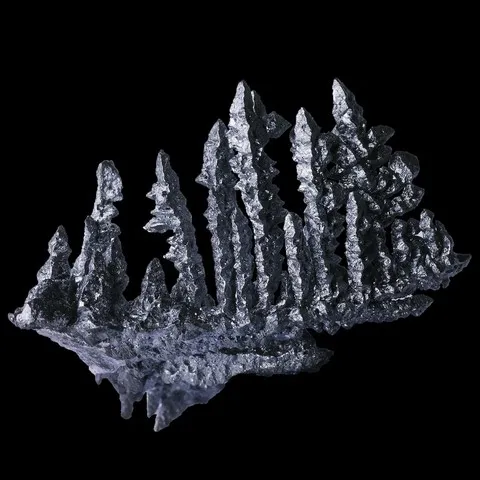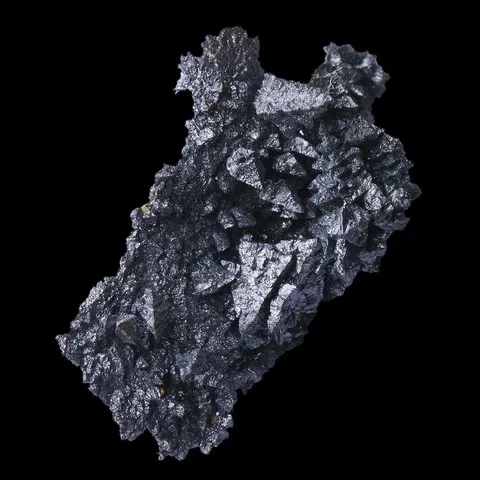ARGENTITE
Class : Sulfides and sulfosalts
Subclass : Sulfides
Crystal System : Cubic
Chemistry : Ag2S
Rarity : Uncommon
Argentite is a fairly rare silver ore from hydrothermal lead-zinc-silver and gold veins, mainly occurring in their cementation zone. It is associated with pyrite, sphalerite, galena, its dimorph acanthite, and many other silver minerals (polybasite, pyrargyrite, tetrahedrite); it is also a mineral accompanying gold in the epithermal veins, metalliferous emanations from volcanic activity. Its name comes from the Latin argentum, in reference to its chemical composition. Stable at high temperature, argentite transforms into acanthite below 179°C, a mineral with the same chemical formula which also borrows its forms : massive, tree-like, sometimes in cubo-octahedral crystals. It is a lead-grey mineral which quickly tarnishes black in air, characterized like many silver sulphides by a high specific gravity (7.2) and a low hardness of just over 2.
Argentite in the World
Twinning and special crystallizations
Argentite may show polysynthetic twins on (111), but these are not visible to the naked eye.
Fakes and treatments
No fake or treatments identified for this mineral species.
Hardness : 2 to 2.5
Density : 7.2 to 7.4
Fracture : Sub-conchoidal
Trace : Gray
TP : Opaque
RI : -
Birefringence : -
Optical character : -
Pleochroism : None
Fluorescence : None
Solubility : Nitric acid, hydrochloric acid and ammonia
Magnetism : None
Radioactivity : None


